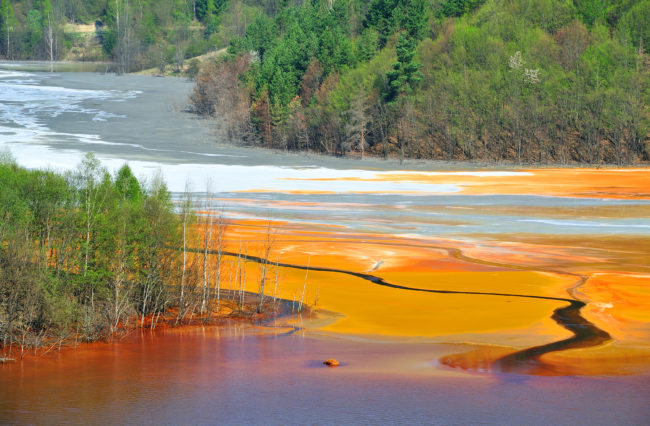In February, we reported about whether ground water can be regulated under the Clean Water Act. As a refresher, we discussed Hawaii Wildlife Fund v. County of Maui — a case involving the indirect discharge of injection well wastewater into the ocean by traveling through groundwater. The court held there that for purposes of the CWA the injection wells were a point source, requiring an NPDES permit for groundwater because “the pollutants are fairly traceable from the point source to a navigable water such that the discharge is the functional equivalent of a discharge into the navigable water.” We know now that the Ninth Circuit’s novel interpretation of the CWA doesn’t stand alone.
Recently, the Fourth Circuit, in a split decision, handed down an opinion that answered in the affirmative the similar issue of “whether an indirect discharge of a pollutant through ground water, which has a direct hydrological connection to navigable waters, can support a theory of liability under the CWA.” The facts in Upstate Forever v. Kinder Morgan were not in dispute. Namely, Kinder Morgan’s pipeline released around 369,000 gallons of gasoline into the ground (Kinder Morgan had recovered 209,000 gallons, with further recovery continuing), and it had repaired the pipeline immediately following the release. The line was not leaking at the time the citizen suit commenced. Ergo, could it be an ongoing violation (a discharge) from a point source (the pipeline)?
The Upstate Forever court framed the issue as “whether citizens may bring suit alleging a violation of the CWA when the source of the pollution…is no longer releasing the pollutant, but the pollutant allegedly is passing a short distance through the earth via ground water and is being discharged into surface waterways.” The Fourth Circuit reversed the district court’s dismissal of the citizen suit, stating that citizens may bring suit for discharges of pollutants “that derive from a ‘point source’ and continue to be ‘added’ to navigable waters.” In particular, the court found that the CWA’s language does not require that a point source continue to release a pollutant to meet the “ongoing” or “continuous” element of a citizen suit; it requires only that “there be an ongoing ‘addition…to navigable waters” regardless of whether a defendant’s conduct causing the violation is ongoing.
In determining whether a discharge of a pollutant that moves through ground water before reaching navigable waters may constitute a discharge of a pollutant within the meaning of the CWA, the court held that a plaintiff can meet is pleading burden by alleging a “direct hydrological connection between ground water and navigable waters” when a discharge of a pollutant passes through ground water. The court did limit its decision in stating expressly that it was not covering discharges to ground water itself, but only that an alleged discharge reaching navigable waters satisfies the CWA if it is “located 1000 feet or less from the point source by means of ground water with a direct hydrological connection to such navigable waters…”
The dissent in Upstate Forever would have found that the citizen suit was properly dismissed by the district court because the only point source involved—the pipeline—was repaired and “not currently adding any pollutants into navigable waters,” negating the required element of an “ongoing” discharge from a point source. The dissent saw the facts here as supporting an ongoing groundwater “migration” from the spill site, which is not a CWA violation supporting a citizen suit. Ongoing migration, that is by definition, a “nonpoint source pollution”— sits outside the purview of the CWA.
Upstate Forever and Hawaii Wildlife Fund suggest an expansion of CWA liability, as well as a broader scope for NPDES permitting requirements. These decisions of course will now require regulated entities to consider whether discharges into groundwater might find their way to navigable waters — and whether they are likely to continue to migrate through groundwater far after the point source has been repaired. Still, we wait on further direction about when a discharge is covered by the CWA. Currently, three circuits have relevant cases pending: another from the Fourth Circuit (Sierra Club v. Virginia Electric Power), from the Second Circuit (26 Crown Street Assocs. v. Greater New Haven Water Pollution Control Authority), and from the Sixth Circuit (Tennessee Clean Waters Network v. TVA). The EPA has also requested comments on its prior positions, including on whether the CWA requires permits for discharges to groundwater. These are interesting developments in the very complex and turbulent world of the Clean Water Act. We’ll report back when further noteworthy decisions or news arises.

